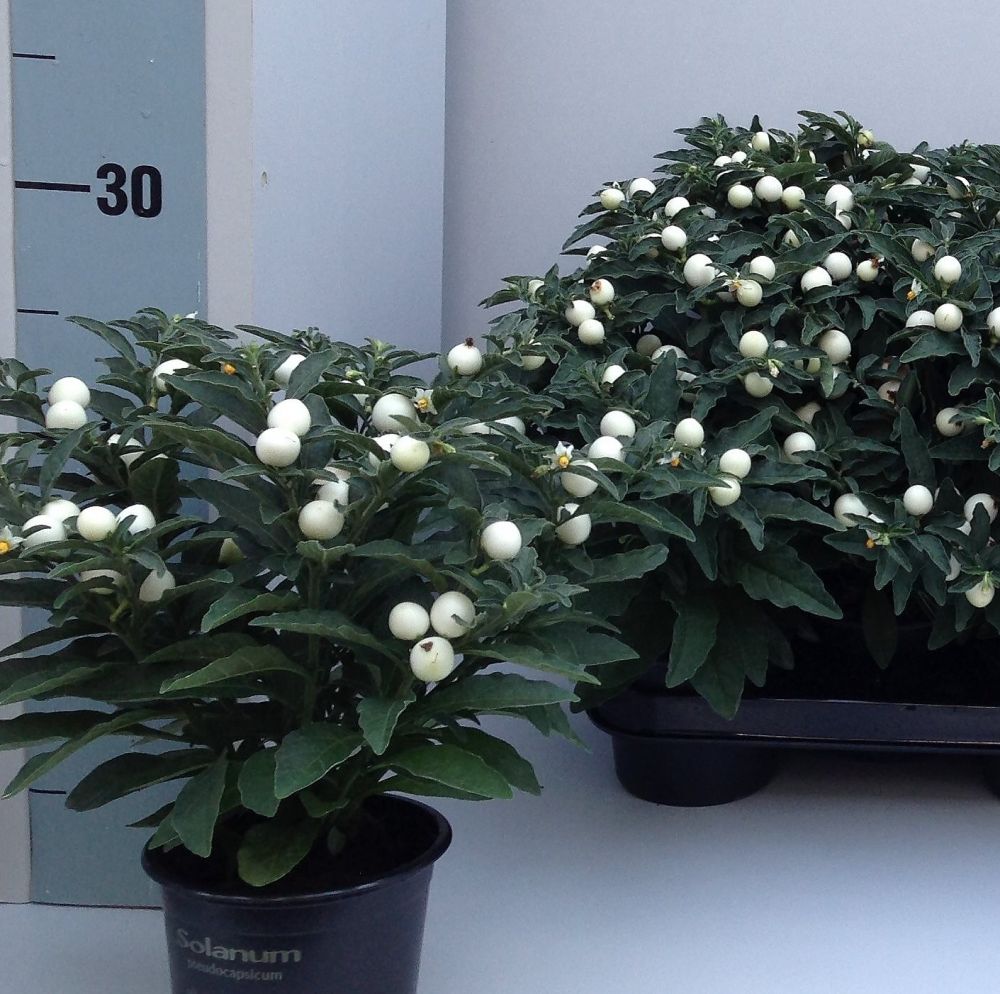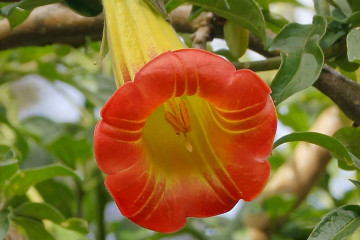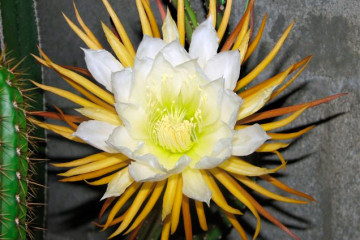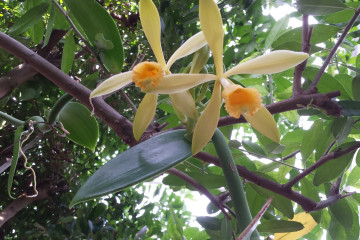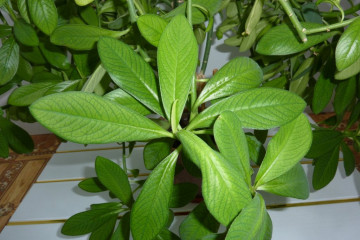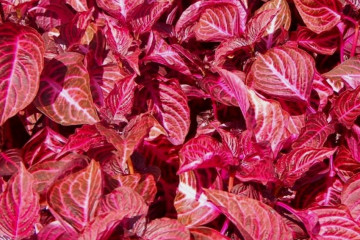Indoor nightshade: examples of care and the main varieties of plants
Content:
Not the most famous, but at the same time, a very interesting and beautiful plant is the house nightshade. It can be a wonderful decoration for any apartment or office, as it is quite easy to care for and grow. Of course, in order to provide him with suitable conditions, it is necessary to learn more about him.
Main types

Looks luxurious
In general, the Solanaceae are a fairly large family, which includes about 1200 of the most different plants. By the way, this list also includes tomatoes, potatoes, eggplants and many others that are well known to everyone. True, only a few species are suitable for growing at home.
Prickly nightshade
Another name that this plant received is horned nightshade. In the wild, it can grow up to one and a half meters. Of course, when grown in a pot, it is much smaller. It tolerates drought well thanks to its powerful root system, which goes deep up to 3 meters.
It blooms with yellow flowers about 2-3 cm in diameter. You should be careful when growing it - the leaves contain toxic substances that are dangerous if you violate the rules of handling.
Jasmine nightshade
Curly evergreen shrub that grows up to 4 meters! Branches are thin, bare, with several leaves only at the very top.
- The leaves are elongated, narrow, deep green.
- The flowers are not too large - no more than 2 cm, white with a bluish tinge.
- The fruits are bright scarlet or orange berries.
Perhaps this decorative nightshade is the most beautiful. In addition, it blooms for a very long time - about 8 months a year.
Curly nightshade
Evergreen liana, characterized by fast growth. Differs in ease of care and unpretentiousness. The flowers are very similar to potato flowers. The flowering period lasts from early summer to mid-autumn, after which the berries appear.
The fruits of the nightshade are yellow, not too large. But it is this species that is the most cold-resistant in the entire family, which makes it suitable for growing in a flower bed or balcony.
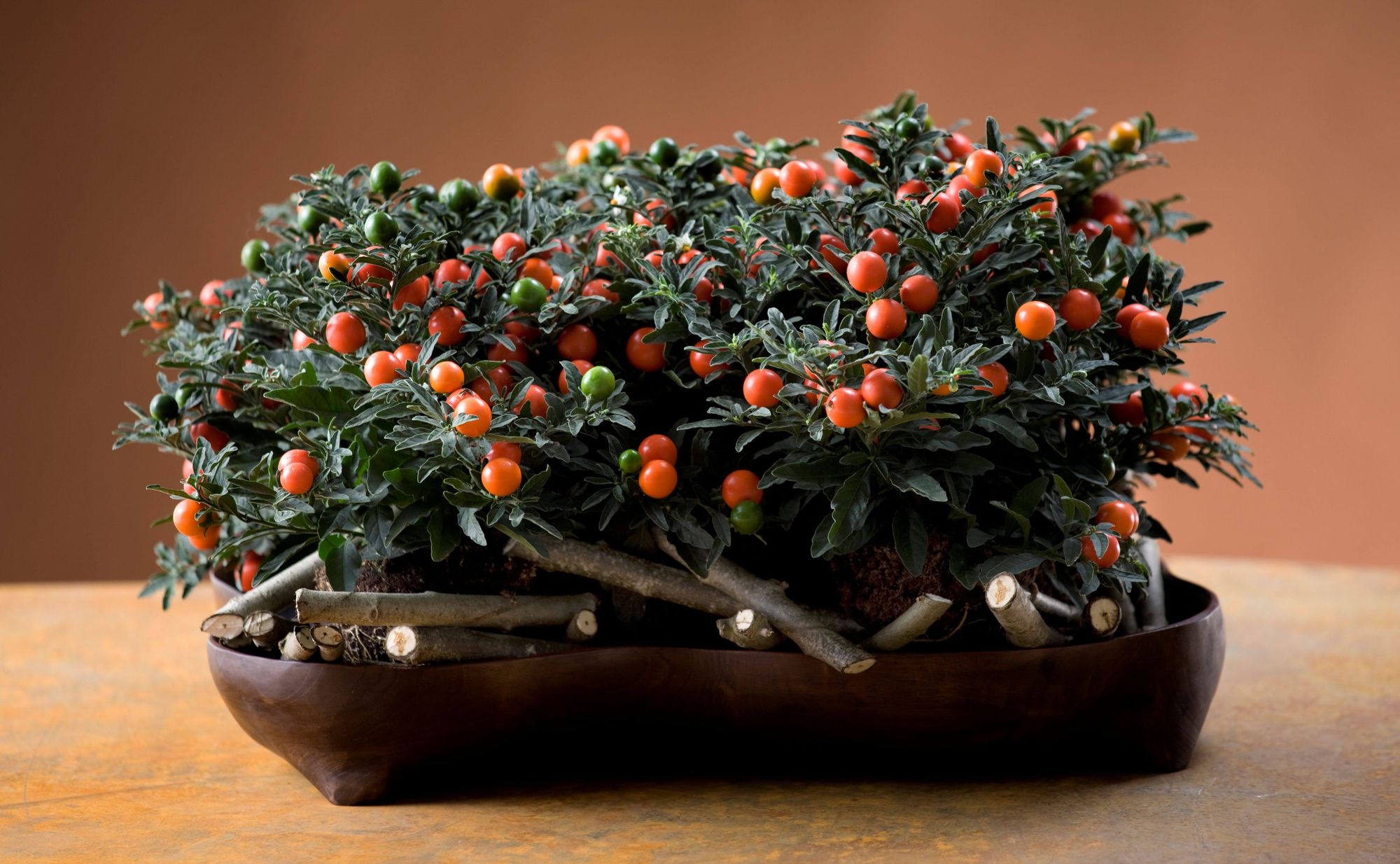
Can be grown as bonsai
Home care conditions
Of course, in order for it to grow normally, room care must be provided for the nightshade. Fortunately, this is fairly easy to do.
Temperature
For the rapid development of homemade nightshade, it is very important to observe the temperature regime.
- In the warm season, the plant feels best at +20 .. + 25 degrees.
- But in cold weather it is better to lower the temperature to +15 degrees.
Under the right conditions, the plant bears fruit for much longer.
It is also worth remembering that he needs fresh air, but at the same time it is advisable to protect it from drafts - their nightshade flower simply cannot stand it.
Top dressing
During flowering, as well as active growth, nightshade needs appropriate fertilizers. The easiest way is to use a complex mineral. You can find special top dressing for tomatoes in almost any gardening store. It is best to use them to fertilize nightshade so that it grows actively and blooms for a long time.
Of course, you need to carefully follow the instructions so as not to harm the plant.
The soil
Experienced growers say that the optimal soil mixture for growing nightshade is made up of peat, leaf humus and sod land. You need to mix them in equal proportions.
The resulting soil, on the one hand, is rich in nutrients, and on the other, it is very light, thanks to which the air easily passes to the roots, ensuring the rapid growth of the plant.
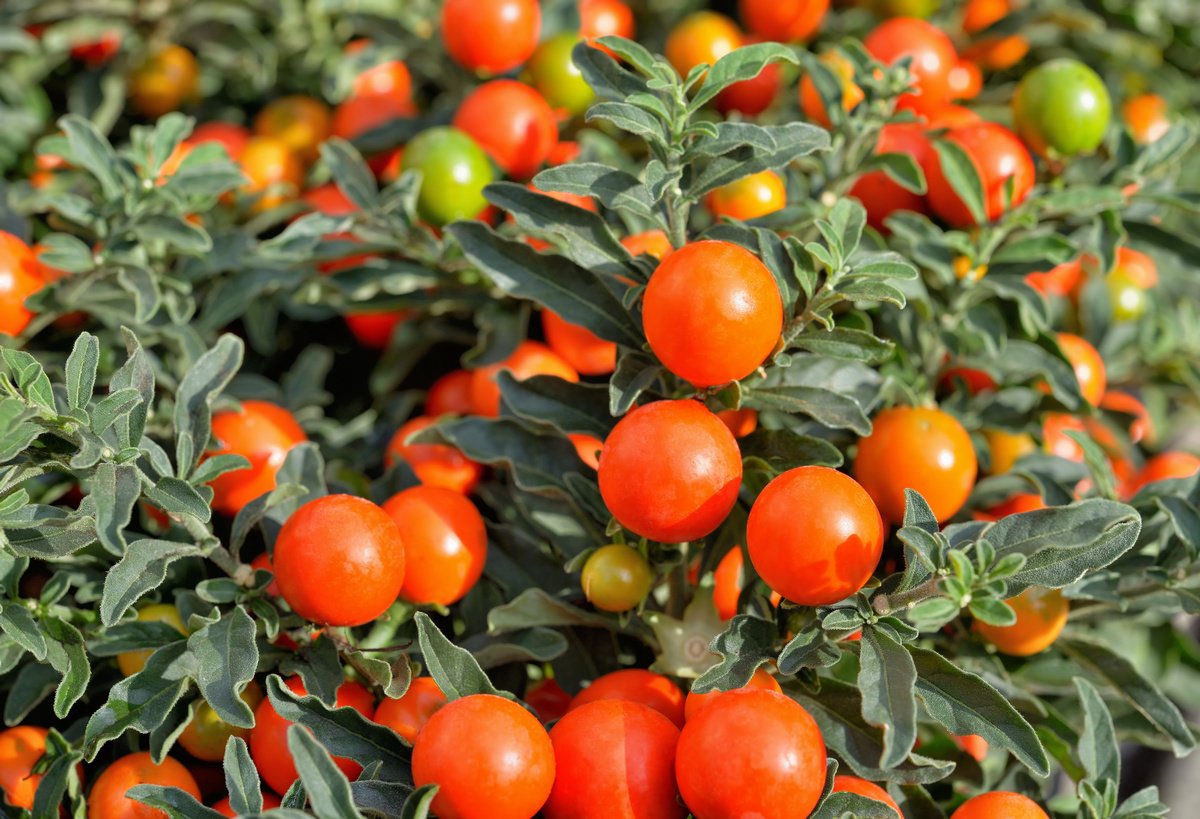
Fruits are the main decoration of the bush
Watering
Of course, if we talk about decorative nightshade, home care will be incomplete without a description of this important factor.
All warm seasons, from about the end of March to the end of September, the plant needs to be watered abundantly. However, do not forget about high-quality drainage - excess moisture may well lead to rotting of the root system.
For the dormant period (from October to February), it is practically not necessary to water. If the leaves wither, then they should be sprayed with a spray bottle. Watering resumes around mid-February, when the first new shoots appear.
Plant transplant
The optimal time for transplanting is mid to late February, before the plant grows. It is important to choose a breathable and loose substrate like the one described above.
Drainage material (expanded clay, large pebbles or small crushed stone) is poured into the bottom of the pot, allowing excess water to flow freely. After that, the plant must be cut and transplanted into a new container.
Pruning nightshade
Of course, if the grower is interested in nightshade, indoor flower, then this important stage of care cannot be ignored.
It is desirable to carry out pruning immediately after the completion of fruiting. This allows you to maintain the attractiveness of the bush - otherwise it grows strongly and becomes not very attractive. In addition, pruning has a positive effect on the health of the plant.
First you need to cut off the main stem - this stimulates the growth of the lateral processes. After that, you need to pinch their ends - then the plant will become more compact and beautiful.
Fruiting
Every person who decides to grow a nightshade dreams of seeing a beautiful indoor plant with red berries in a pot. But the trouble is - quite often numerous flowers appear on the bush, but the ovary is never formed.
This is due to the fact that the flowers are simply not pollinated. And they need cross-pollination for fruit to appear. Therefore, it is recommended to put the pot on the balcony or in the garden in good weather - the wind often carries pollen easily. If this is not possible, then the procedure will have to be done manually using a soft brush or cotton swab.
Reproduction methods
Any florist who likes a nightshade plant would probably like to know not only how to properly care for it, but also how to propagate it. There are two ways to do this - cuttings and seeds. Each option has certain merits that make it the best choice in a particular situation.
Cuttings
This method is attractive in that it allows you to save at least a few months - a young plant will grow quite actively from the cuttings, which will soon turn into a beautiful bush. True, it is suitable only for those who have already grown nightshade or friends from whom you can take a shoot.
The breeding procedure itself is quite simple.
From an adult plant, you need to cut off a branch - strong, healthy, with 2-4 leaves. It is dipped into water so that young roots appear.After that, you can plant the cutting in a pot, using a mixture of sand and peat soil as a substrate. To prevent drying, cover the pot on top with foil or glass. Sometimes the plant and the surrounding soil need to be moistened - preferably with a spray bottle.
After rooting, the film is removed, and during the summer it is pruned two or three times so that the plant shrubs better and looks more attractive.
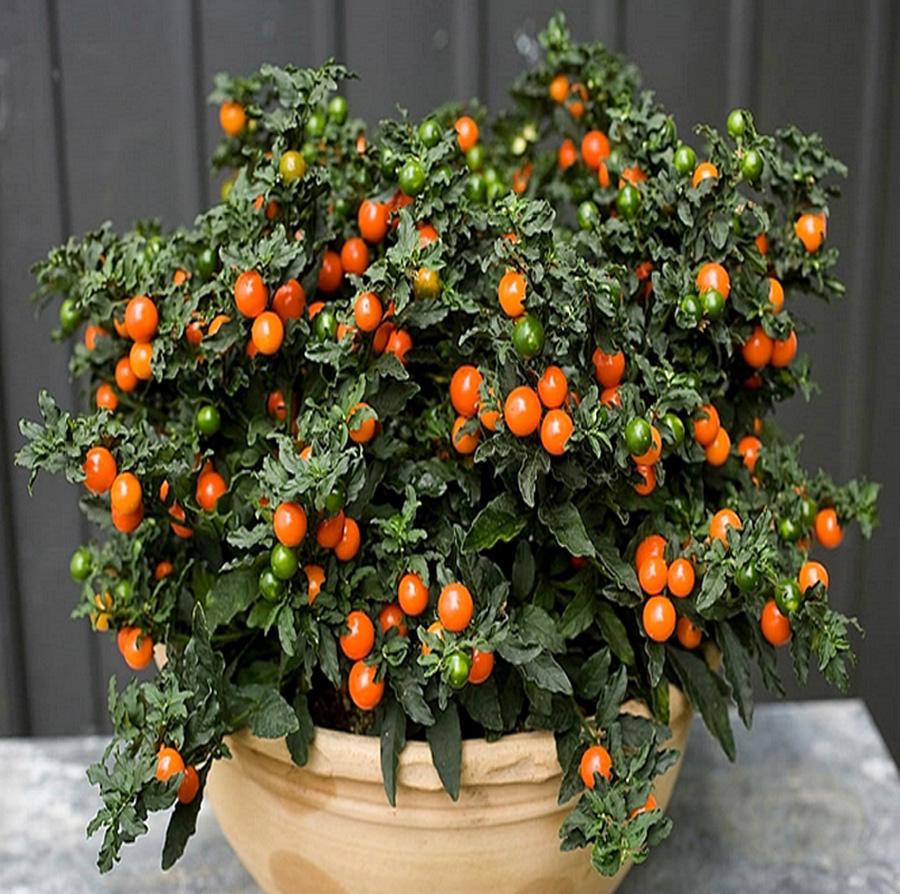
Perfect addition to the interior
Seeds
The main advantage of this option is that seeds can always be purchased, at least in a store, at least via the Internet. True, it will take several months more to grow a nightshade bush than from a cuttings.
The procedure is pretty straightforward. First, soak the seeds for half an hour in warm water, then sprinkle them on the ground in a suitable pot. You don't need to bury them - just sprinkle them with fine sand on top, moisten them with a spray bottle and close them with glass on top, creating a small greenhouse.
Usually, the first shoots hatch a week or two after planting. When two leaves appear, you can pick and plant the nightshade in separate pots, where they will grow for the coming years.
As the reader can see, caring for your homemade nightshade is pretty simple. And the plant is attractive enough to decorate any apartment.
